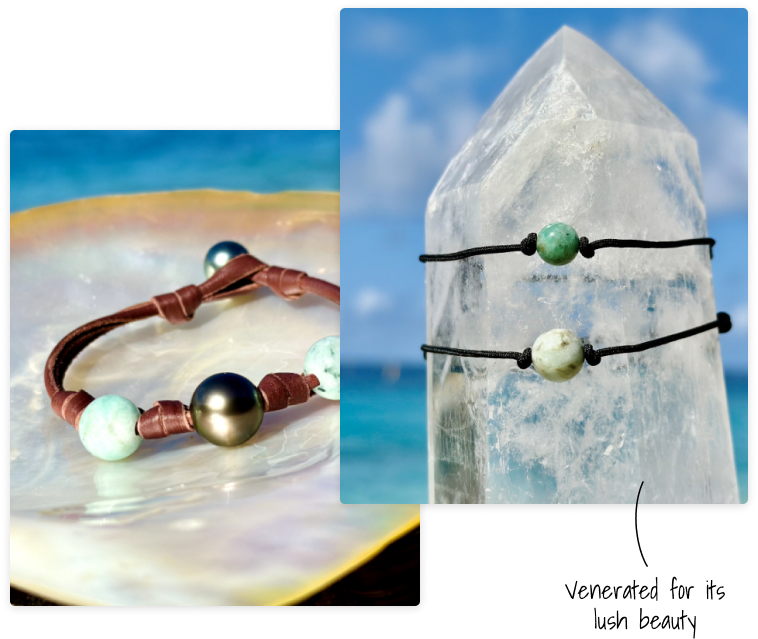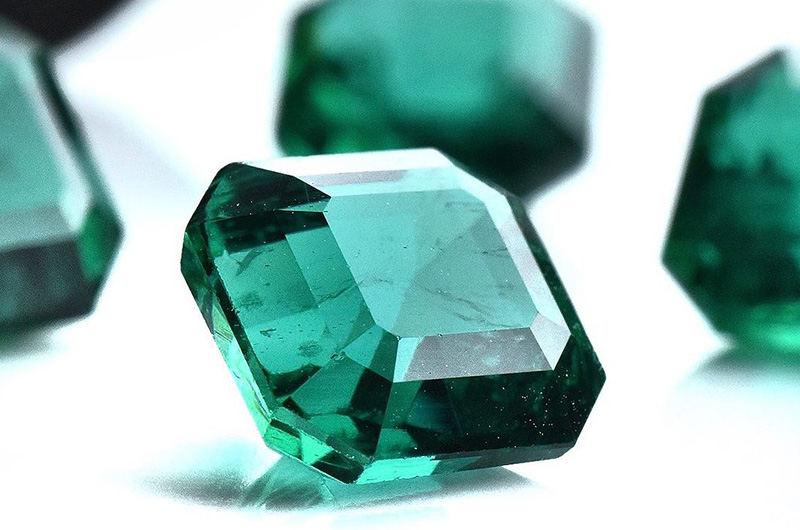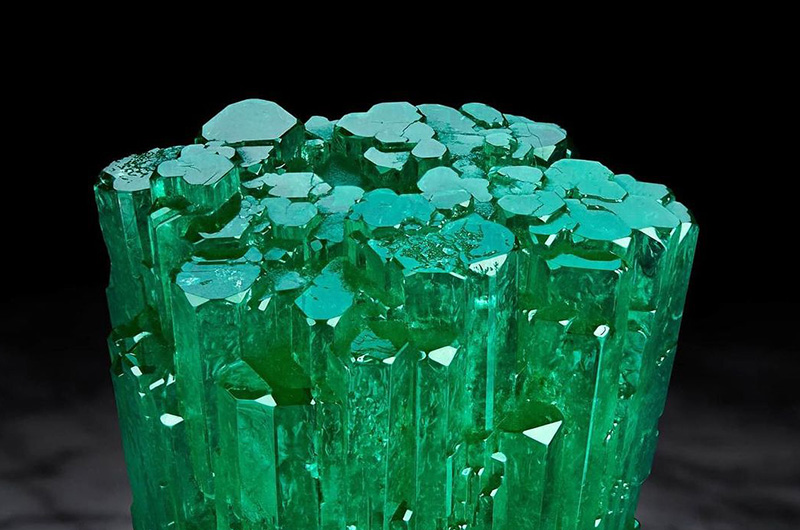You've added...
Emerald

A bit of history about emeralds!
Historically, emeralds were sought after by kings and queens for their deep green color, often associated with fertility, rebirth, and eternal life. This precious stone has been central to many ancient cultures, from the Incas of South America, who revered it as a sacred symbol, to the Egyptians, where the famous Cleopatra was known for her passion for these green gems. In stories and legends, emeralds have often been surrounded by mystery and magical powers.
It was believed that they offered prophecy, protection against disease, and even the ability to see into the future. Its green hue is also closely linked to nature, symbolizing regeneration and revitalization. Today, emerald continues to capture our imagination. It is synonymous with luxury, sophistication, and refined taste in the world of high jewelry. Its presence in natural jewelry, from elegant rings to opulent necklaces, perpetuates its legacy as one of the most precious and desired gems in the world.
Read more
Physical and Chemical Properties of Emerald
Emerald is a precious stone with a vibrant green color that varies from pale to deep dark green. Its color is primarily due to trace amounts of chromium, and sometimes vanadium. In terms of hardness, emerald ranks between 7.5 and 8 on the Mohs scale, making it hard enough for jewelry use but still requiring special care when handled.
Crystal Structure:
Emerald belongs to the beryl family and is characterized by its hexagonal crystal structure. This structure often contains internal inclusions and fractures, known as the “emerald garden.” These features are not only accepted but are often valued as they make each stone unique.
Chemical Composition and Geological Formation:
Chemically, emerald is a silicate of aluminum and beryllium. It forms in metamorphic rocks under high pressure and high temperatures. These conditions are often found near geological sites where tectonic plates meet, explaining the rarity and limited geographic distribution of high-quality emerald deposits.
Origins and Main Sources of Emerald
Brazil is another major player in the emerald world, known for its wide variety of shades and qualities. Brazilian mines often produce emeralds with slightly more yellowish or bluish tones, providing an interesting alternative to classic shades. Emeralds from Zambia are increasingly sought after for their exceptional quality and unique color. Often a deep, slightly bluish green, they are appreciated for their clarity and transparency, comparable to the best Colombian emeralds.
Each emerald source has its own characteristics, influencing the appearance and value of the stone:
- Colombian emeralds are often extracted from limestone veins, contributing to their classic green color and clarity.
- Brazilian deposits are found in granitic formations, offering a wide range of qualities and enabling large-scale production.
- Zambian emeralds form in metamorphic schists, often giving them a darker hue and greater transparency.
Knowing the origin of an emerald is essential for understanding its value and rarity. Whether you are a collector, investor, or simply an admirer of beautiful stones, the provenance of an emerald adds a fascinating dimension to its beauty and history.
Emerald Color and Its Evaluation
Color is one of the main factors that determine the value of an emerald. Stones displaying an intense, even color without noticeable color or clarity zones are the most prized and, therefore, the most expensive. Saturation and vibrancy are also crucial; an emerald with a deep, saturated color will typically be more valued than a lighter or duller stone.
The highest-quality emeralds exhibit a rich, uniform green color that is neither too dark nor too light. It’s important to observe the color under natural light or an equivalent light source to fully appreciate its hue. Additionally, the way the stone is cut can impact its color; a well-executed cut can enhance the stone’s color and brilliance.
The color of an emerald is, therefore, a key factor to consider when evaluating this precious stone. It not only determines the gem’s aesthetic appeal but also its rarity and market value. Choosing an emerald for its color is a matter of personal preference, but also requires an understanding of what makes a stone a high-quality specimen.
The History and Mythology of Emerald
In mythology and folklore, emerald is often surrounded by mystery and magic. According to an ancient Roman legend, emerald was the stone of the goddess Venus, symbolizing eternal love and beauty. The ancient Greeks linked emerald to Aphrodite, the goddess of love and beauty. In Christian culture, emerald was believed to symbolize resurrection and eternity. In many traditions, emerald was thought to possess healing powers, especially for eye ailments. It was also believed to predict the future, enhance intelligence, and protect against evil spirits.
The Fascinating Virtues of Emerald in Lithotherapy
For those going through periods of intense stress or negative emotions, emerald can support in restoring serenity and balance. It is also said to stimulate mental clarity and wisdom, making it a popular recommendation for enhancing concentration, memory, and intellectual understanding. In professional or academic settings, wearing an emerald may thus prove beneficial.
Physical Properties of This Natural Stone
Physically, emerald has traditionally been associated with healing and strengthening the immune system. It is also believed to have beneficial effects on the eyes and vision, a legacy from antiquity when it was used to treat various eye disorders.
Emerald and Spirituality
In terms of spirituality, emerald is often used to open and nourish the heart chakra. It is reputed to aid spiritual growth, meditation, and connection with the natural universe. By acting on this chakra, emerald is said to promote openness to love, both in giving and receiving. It is important to remember that lithotherapy does not replace professional medical advice but can be used as a complement to enhance overall well-being.

